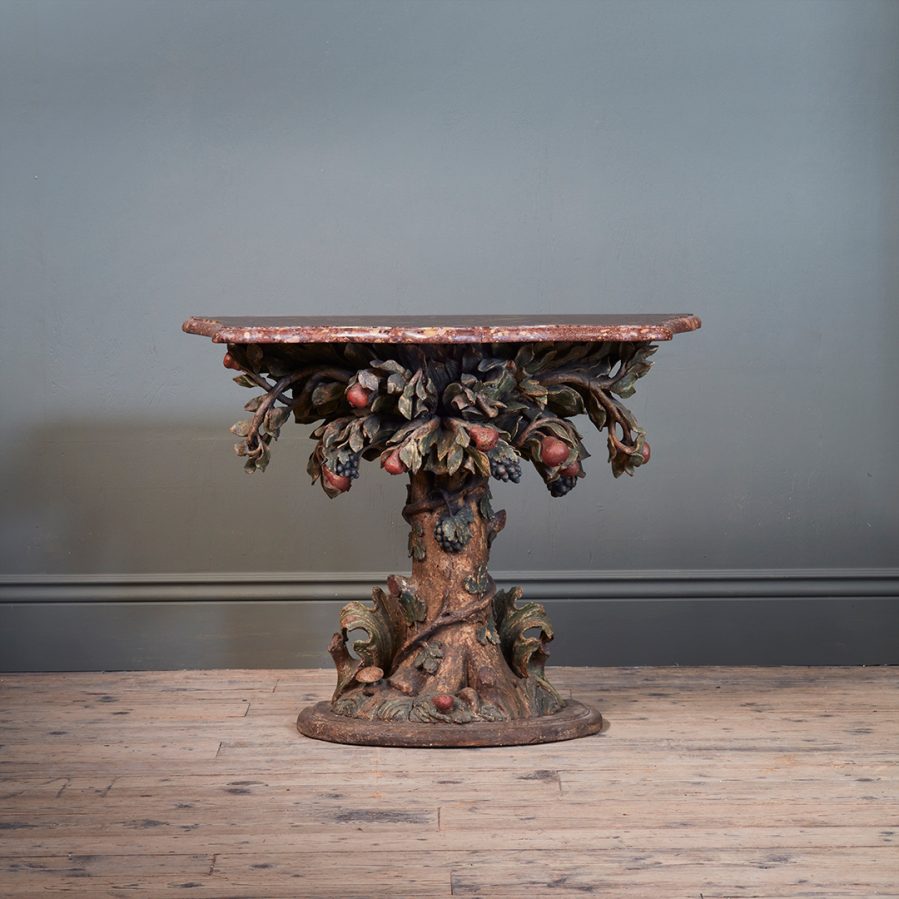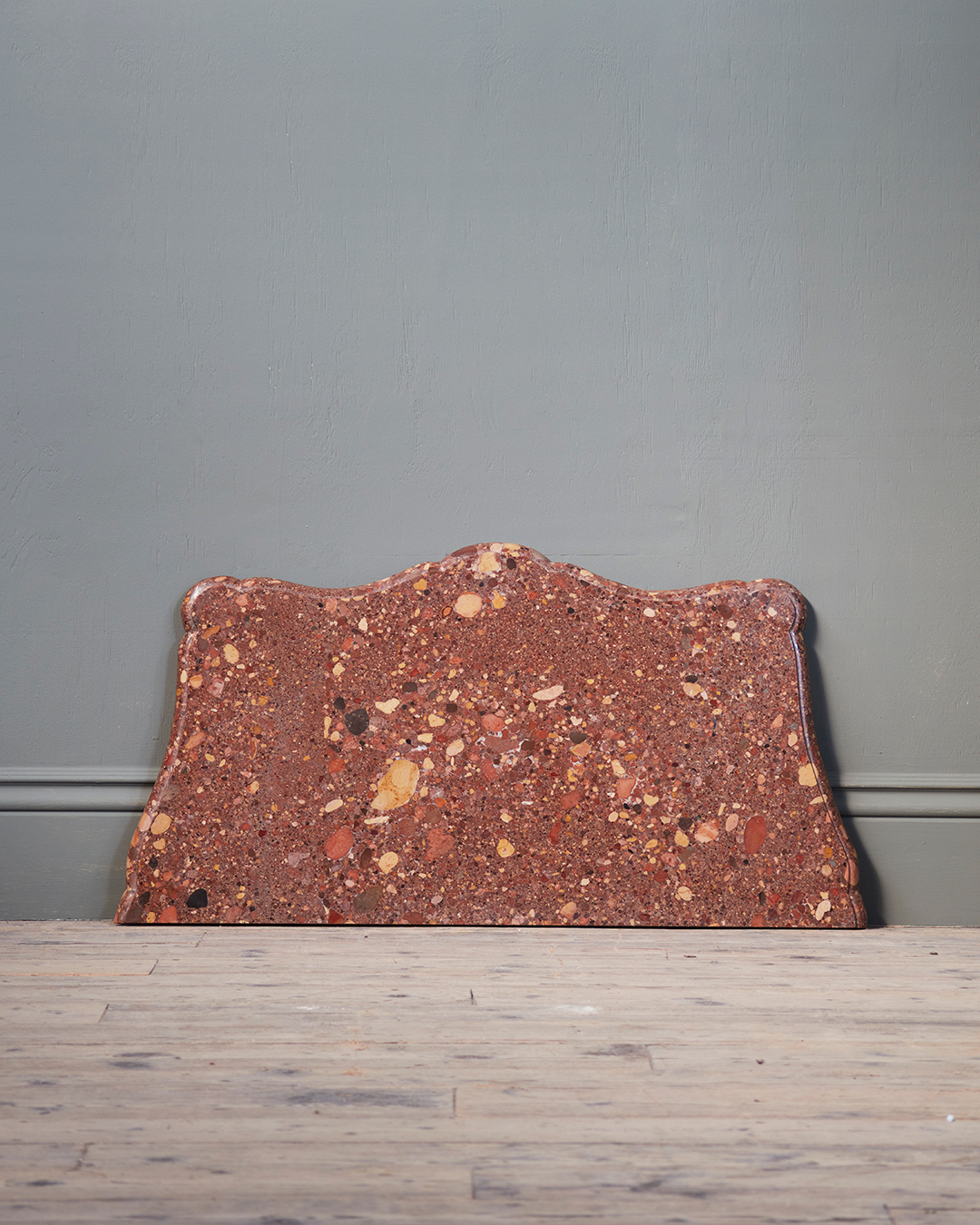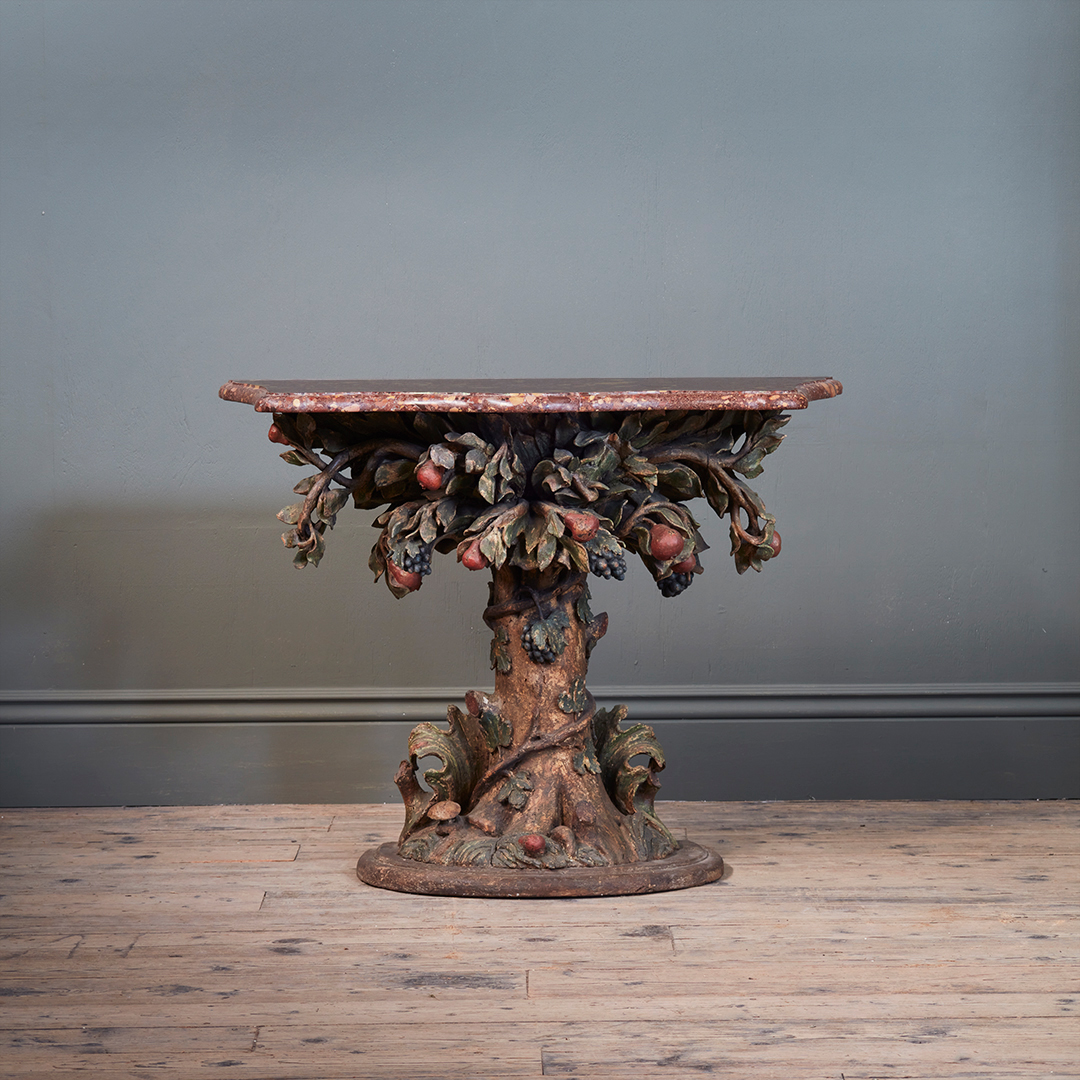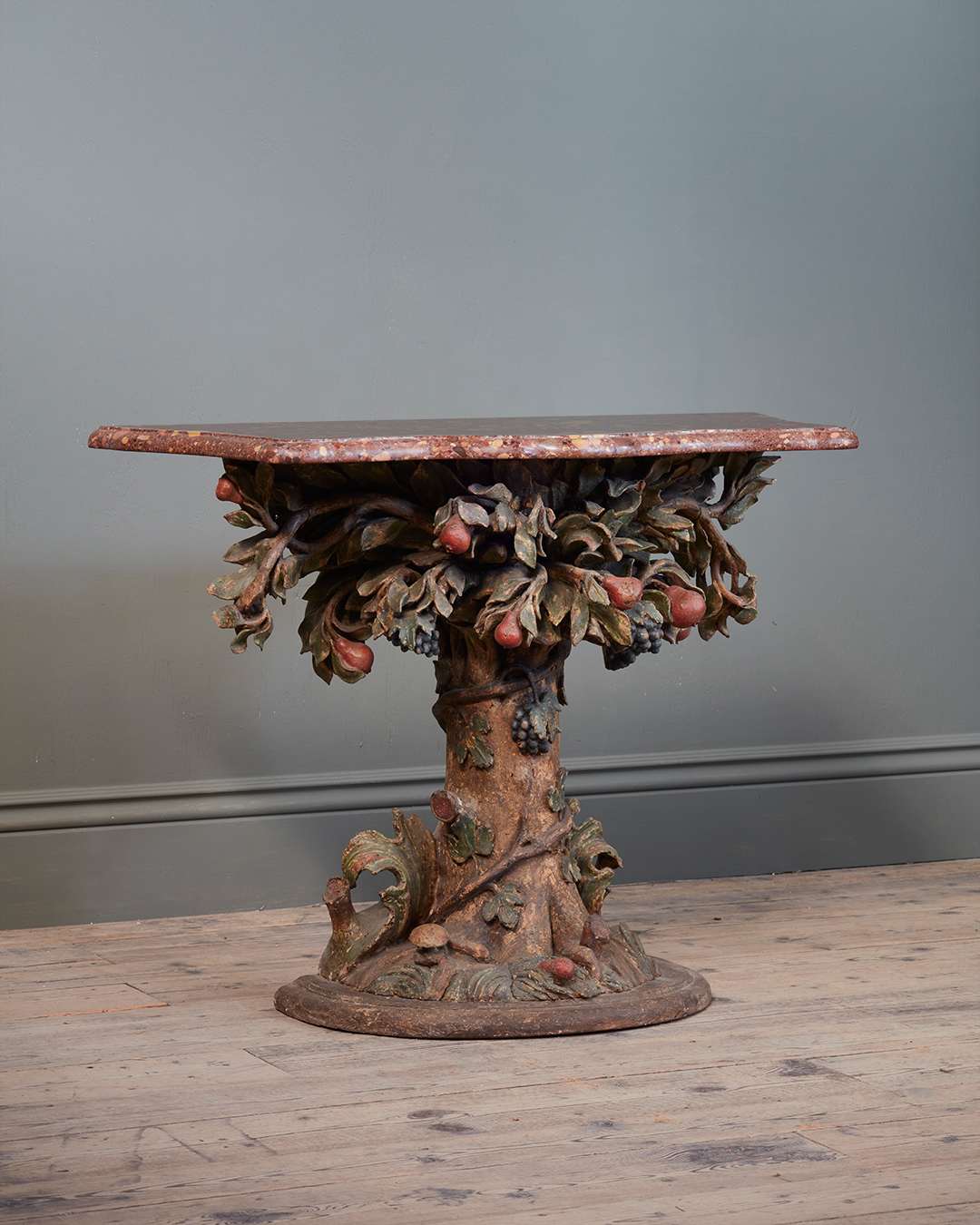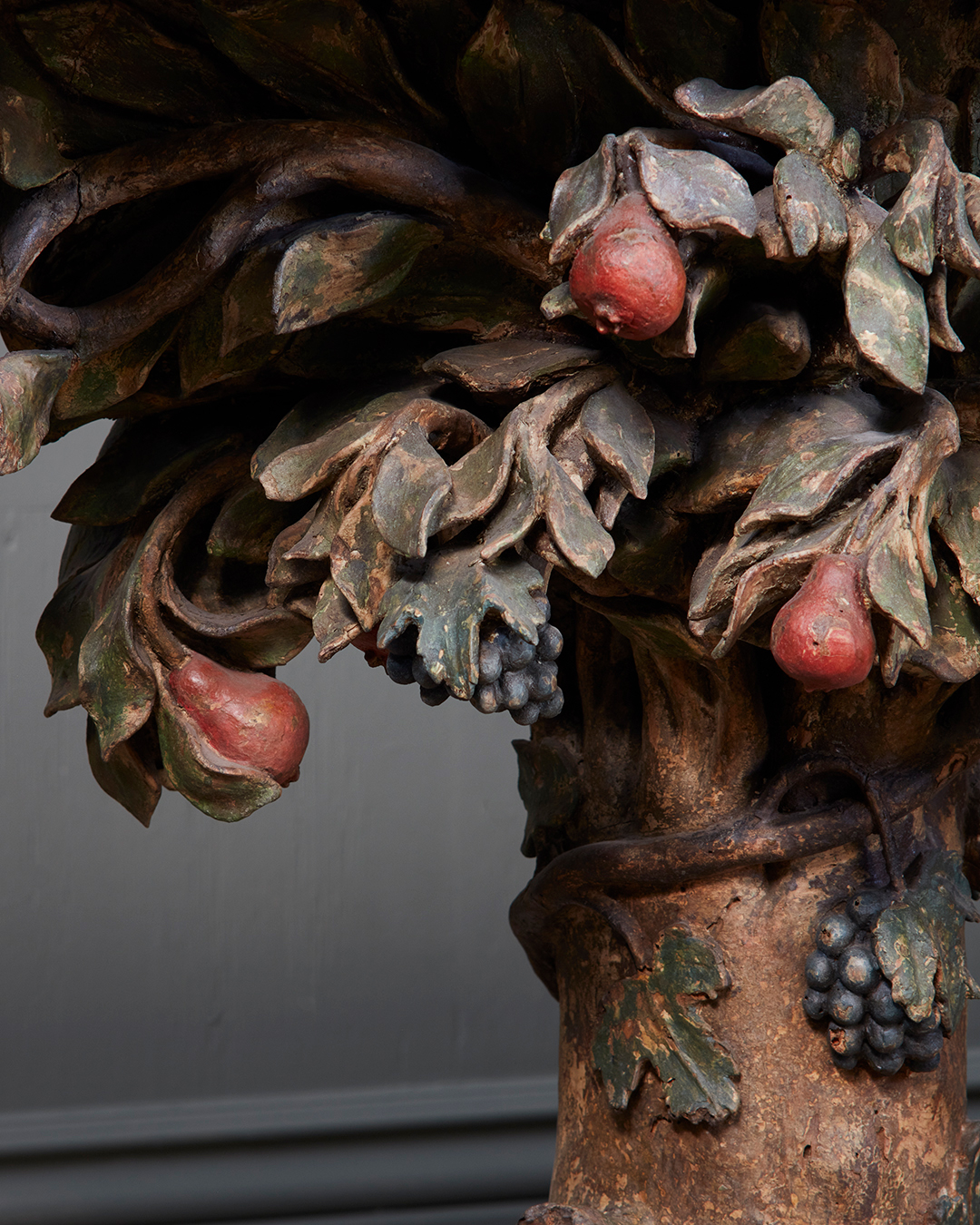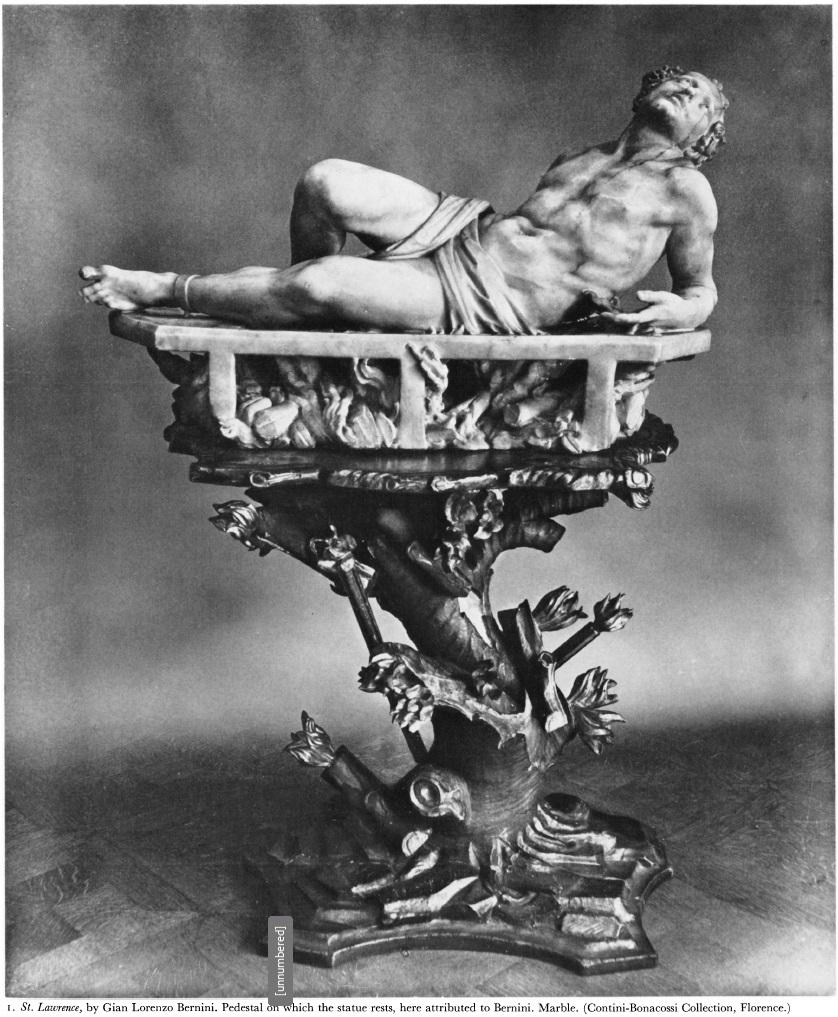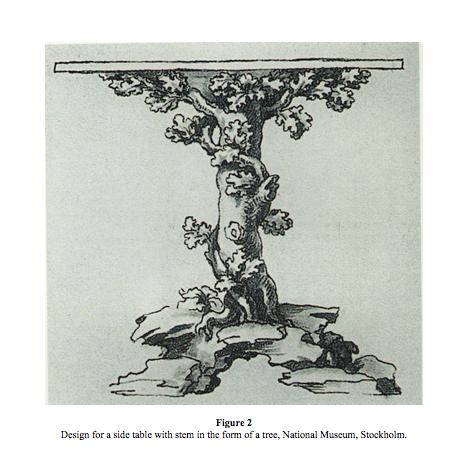A 17th Century Italian Carved Polychrome Table, with Shaped Breccia Capitolina Marble Top
Carved to exceptional naturalistic effect, the base of the present console table takes the shape of a pear tree entwined with vines, its roots firmly planted in a grassy knoll, lush with vegetation. With shaped Breccia Capitolina marble top.
The fashion for such tables had been initiated in seventeenth-century Italy by the preeminent artist Gian Lorenzo Bernini (1598-1680), who – whilst primarily celebrated as a sculptor – was also active as a painter and as a furniture designer. As observed by scholar Alvar González-Palacios, it is amply recorded that “Bernini took punctilious care with the supports of his statues”, including for the pedestal of his renowned Apollo and Daphne in Rome’s Villa Borghese. In about 1617, Bernini carved a Carrara marble figure of the martyred Saint Lawrence that is considered by many a masterpiece of his early career, visible today in Florence’s Palazzo Pitti together with its original base (photograph included). The latter, painted in brown and partly gilt, forms an integral part of the sculpture’s narrative and is shaped like a tree trunk alight with flames, the same that burn the saint’s flesh in his martyrdom. Such a virtuoso and innovative solution, described as “avant-garde” by González-Palacios, contains “all the characteristics of the fully developed Roman Baroque style in furniture: an exuberance of ornament, naturalistic decoration, subtle and delicate carving, a projecting base”.
The evident compositional parallels between these examples from Bernini’s milieu in Rome and the present console table indicate that the author of the latter was familiar with the latest developments in the Baroque style, perhaps thanks to first-hand experience in the papal city, or through the dissemination of drawings such as those now in Stockholm. The choice of a realistically rendered polychrome finish, as opposed to the more typically Roman brown varnish combined with gilding, suggest that we are looking at a regional production, likely originating from an area with an established tradition of polychrome furniture, present in both Northern and Southern Italian regions. Notably, technical analysis of the pigments has revealed a pre 1704 pigement for the execution of our table, which confirms it is an early testament to the popularity of Bernini’s models within the realm of seventeenth-century furniture.
Related Literature; A González-Palacios, “Bernini as a Furniture Designer”, The Burlington Magazine, November 1970, Vol. 112, No. 812, pp. 719-723
& A González-Palacios, Il Mobile a Roma: dal Rinascimento al Barocco, Rome, 2023
Height: 83cm, 32 3/4″
Width: 107cm, 42 1/4″
Depth: 55cm, 21 3/4″
£65,000


